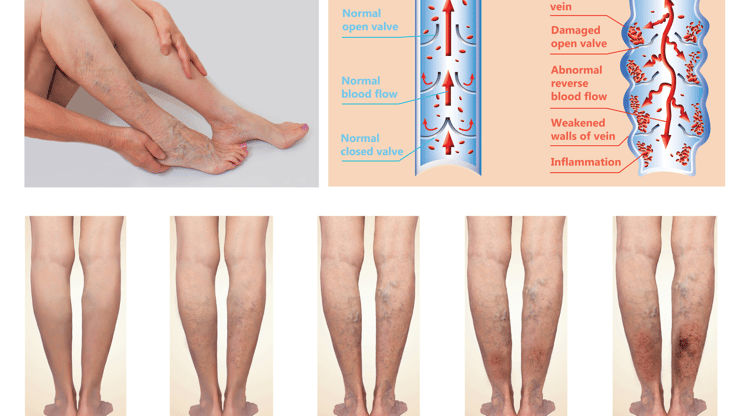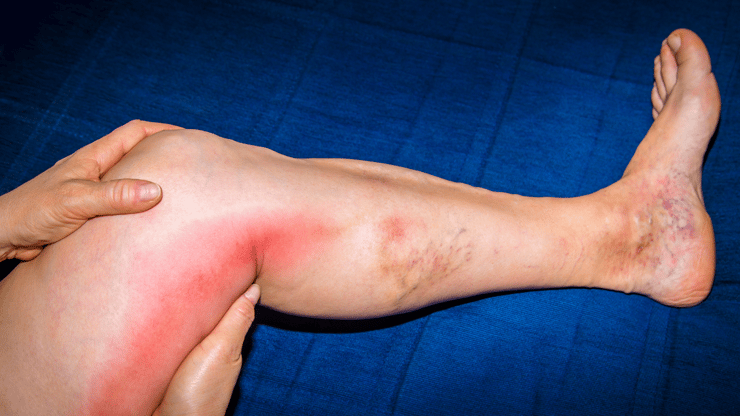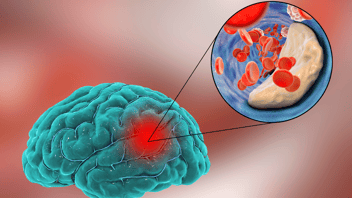What You Need To Know about Thrombophlebitis (Clot) for the NCLEX Exam

Learning about Thrombophlebitis
Nursing students must learn about thrombophlebitis due to its potential complications and prevalence among hospitalized patients. Understanding the risk factors, nursing assessments, and management can empower future nurses to recognize early signs, implement appropriate interventions, and provide optimal care, ensuring patient safety and well-being.
From personal experience on the cardiac unit, I remember one case in particular where a man in his 50’s was not compliant in taking his anticoagulant therapy and had not one, but two clots in his left and right calves. He was in a lot of discomfort and pain and his legs radiated a lot of heat. After anticoagulation intravenous treatment, giving analgesics for the pain, we did another ultrasound and found that the clots were resolving and he was feeling a lot better.
“What if I fail?”
You don’t need more questions. You need a real plan.
🎯 SIMCLEX + Flash Notes + ReadyScore = NCLEX Survival Package
Know you’re ready — before test day.
Thrombophlebitis, a condition characterized by inflamed veins with accompanying blood clot formation, can introduce discomfort and potential health risks. This inflammation typically occurs in the legs and may result from factors such as prolonged inactivity, injury, or underlying conditions that promote clotting.
The affected vein may appear reddened, swollen, and painful to the touch. In more severe cases, a dislodged clot can travel to the lungs, causing a potentially life-threatening condition known as pulmonary embolism. Swift medical assessment and intervention are essential to manage thrombophlebitis.
Treatment may involve pain management, compression stockings, and anticoagulant medications to prevent clot progression. Preventive measures such as staying active and avoiding prolonged immobility during travel can play a role in reducing the risk of thrombophlebitis. Recognizing symptoms and seeking timely medical care are paramount in minimizing complications and ensuring overall well-being.
Thrombophlebitis Overview
Thrombus (clot) formation with associated inflammation in the extremity.
General Information on Thrombophlebitis
1. Risk Factors
a. Virchow’s Triad
i. Venous stasis
ii. Damage to the inner lining of the vessel
iii. Hypercoagulability of blood
b. Medical History
i. History of thrombophlebitis
ii. Pelvic surgery
iii. Obesity
iv. Heart failure, MI
v. A-fib
vi. Immobility
vii. Pregnancy
Nursing Assessment for Thrombophlebitis
- Unilateral findings on the affected side
a. Pain
b. Warm skin
c. Redness
d. Tenderness
e. Febrile state
2. Confirm clinical picture with diagnostics:
a. Ultrasound to visualize
b. D-Dimer→ product of fibrin degradation present in the blood after a blood clot is degraded by fibrinolysis (positive=clot)
“What if I fail?”
You don’t need more questions. You need a real plan.
🎯 SIMCLEX + Flash Notes + ReadyScore = NCLEX Survival Package
Know you’re ready — before test day.
Therapeutic Management for Thrombophlebitis
1. If the client has confirmed DVT:a. NO SCD/TED, NO massage, Bedrest-->Could dislodge the clot
2. Initiate anticoagulant therapy
a. Heparin→ Monitor PTT q6h
b. Coumadin (warfarin)--> Monitor PT/INR
3. IVC filter
a. Sits in Inferior Vena Cava
b. Collects clots before they reach the heart/lungs
c. Monitor for s/s Emboli
d. Heart – MI→ Chest Pain
e. Lungs – Pulmonary Embolism→ Anxiety, SOB, ↑ HR, ↑ RR, chest pain
f. Brain – Stroke→ Facial droop, arm weakness, speech Difficulty
g. Monitor distal pulses
h. Clotting Prevention/Monitoring
i. Monitor circumference of limb BID
ii. SCD/TED + enoxaparin sodium (anti-coagulant), if ordered by provider
iii. Passive ROM
iv. Early ambulation
Nursing Case Study for Thrombophlebitis
Patient Profile:
Name: Emma Roberts
Age: 45 years old
Gender: Female
Medical History: Obesity, recent surgery, oral contraceptive use

Presenting Symptoms:
- Left leg pain and tenderness
- Warmth and redness along the left calf
- Low-grade fever
- Physical Examination: Mrs. Roberts presented with swelling and inflammation in the left leg, indicative of possible thrombophlebitis.
- Duplex Ultrasound: Performed to confirm the diagnosis, revealing a deep vein thrombosis (DVT) in the left femoral vein
Medical History:
Mrs. Roberts underwent abdominal surgery two weeks ago. She had been prescribed oral contraceptives for menstrual irregularities
Diagnosis:
Mrs. Roberts was diagnosed with thrombophlebitis, specifically DVT, in the left femoral vein.
Treatment Plan:
- Anticoagulation Therapy:
- Heparin- Administered initially as a continuous intravenous infusion to rapidly prevent clot progression.
- Warfarin: Started concurrently to achieve therapeutic anticoagulation over time.
- Pain Management:
- Analgesics: Prescribed to manage pain and discomfort
- Leg Elevation and Compression:
- Mrs. Roberts was instructed to elevate her left leg to reduce swelling and compression stockings were applied to prevent further venous stasis
- Mobility and Ambulation:
- Encouraged early mobilization to reduce the risk of complications and promote blood circulation.
- Oral Contraceptive Discontinuation:
- Mrs. Roberts was advised to discontinue her oral contraceptive use due to its association with increased clotting risk.
- Patient Education:
- Provided comprehensive education on DVT risk factors, signs of complications, medication compliance, and the importance of follow-up appointments.
With diligent monitoring and appropriate interventions, Mrs. Roberts’ condition improved. Her pain and swelling decreased, and repeat ultrasounds showed clot stabilization and gradual resolution. She actively participated in her care, adhering to anticoagulation therapy and adopting lifestyle modifications.
“What if I fail?”
You don’t need more questions. You need a real plan.
🎯 SIMCLEX + Flash Notes + ReadyScore = NCLEX Survival Package
Know you’re ready — before test day.
You CAN Do This
Happy Nursing!







